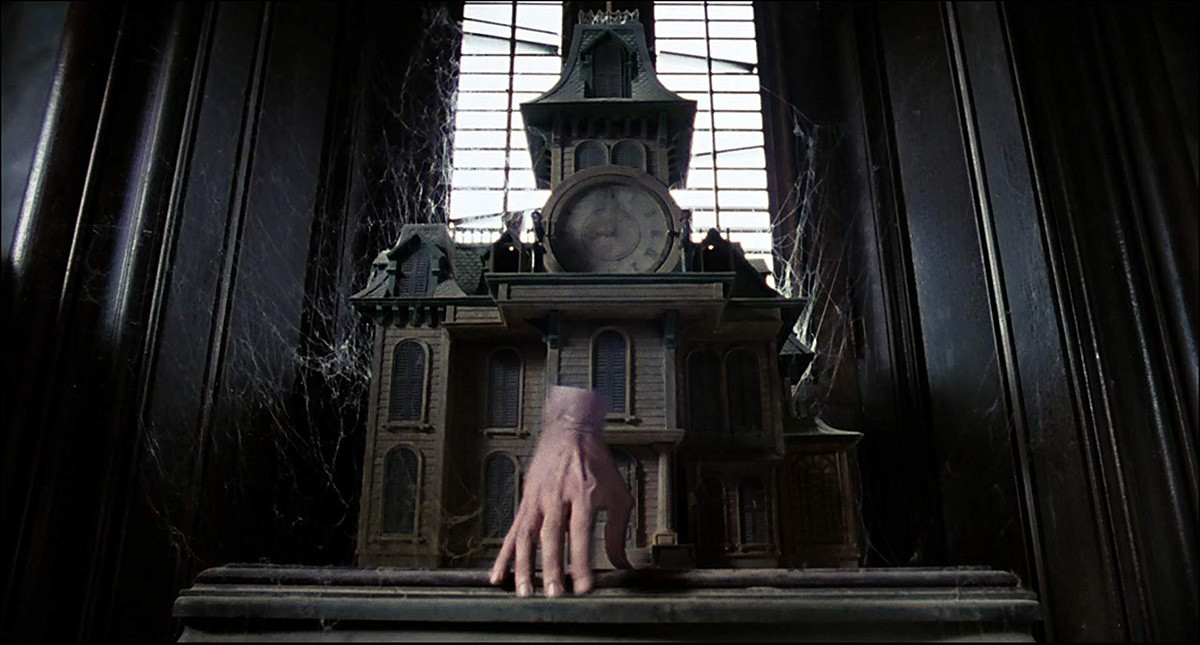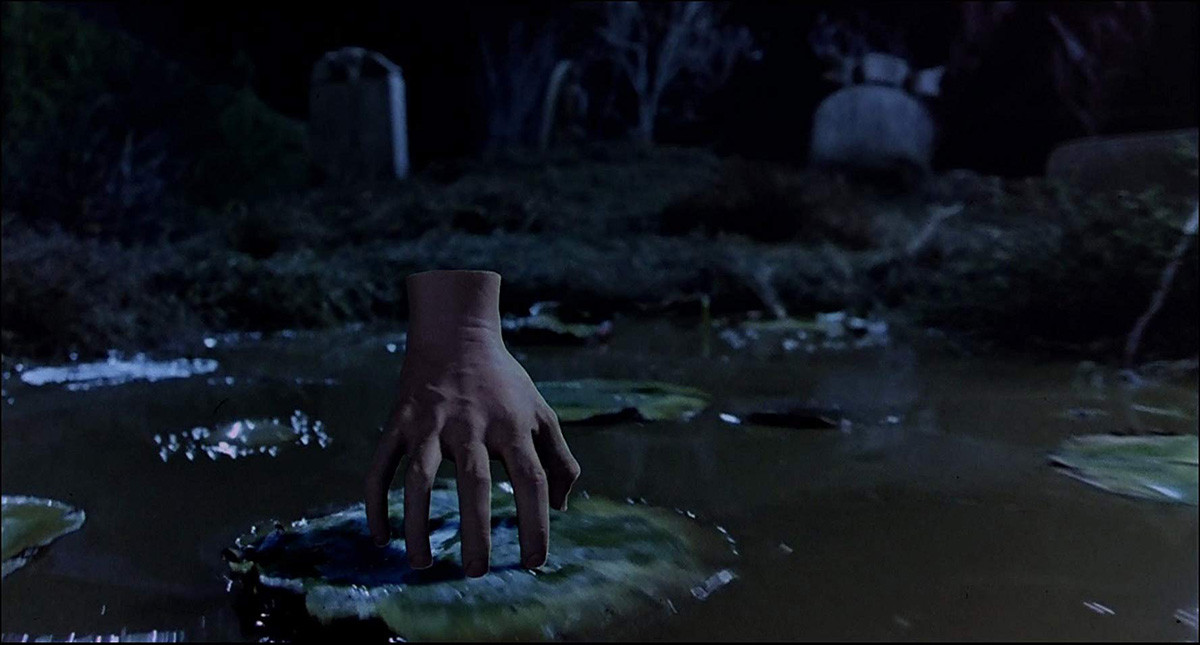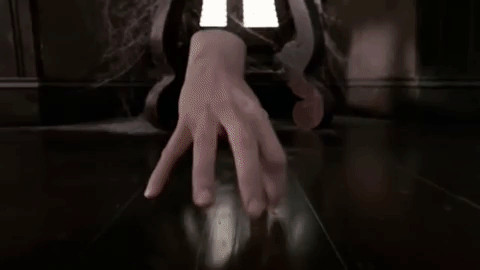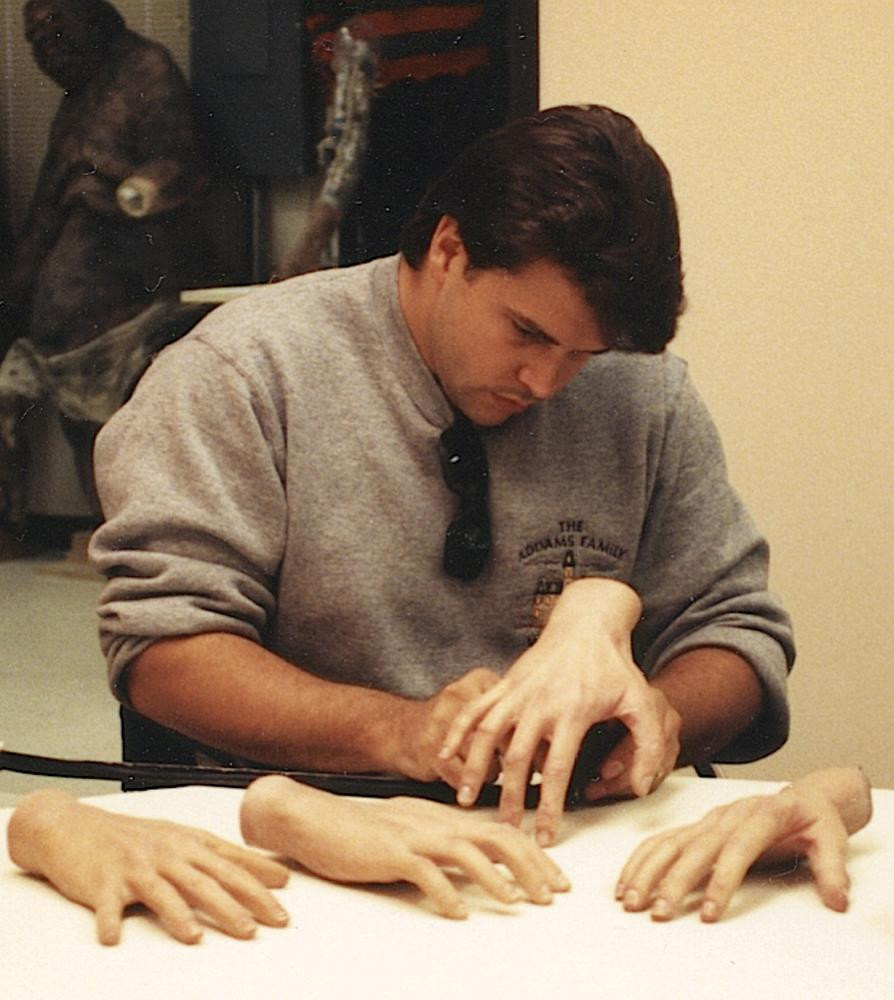As a new animated rendition of The Addams Family graces cinemas, directed by Conrad Vernon and Greg Tiernan, we take a nostalgic trip back to the 1990s. It was a time when director Barry Sonnenfeld brought the delightfully macabre Addams Family to life in two iconic films, starting with 1991’s The Addams Family. A standout visual effects challenge in this movie was none other than Thing, the disembodied hand. More than just a prop, Thing was a character in its own right, needing to crawl, perform stunts, and emote – a true principal of the film.
In today’s world, creating a ‘live-action’ Thing might be seamlessly achieved with CGI. However, back in the early 90s, computer-generated imagery was still in its nascent stages. So, the burning question arises: how was Thing brought to life on screen in the 1991 Addams Family movie? To uncover this fascinating process, we delve into the insights of Alan Munro, the visual effects supervisor for The Addams Family. Munro, who landed the role by suggesting a famous dancer as a movement reference for Thing and later championed using a real person for the performance, provides a hilarious and detailed account of the creation of this beloved character.
The Genesis of Thing’s Character
Alan Munro recounts his initial meeting in Scott Rudin’s office in 1990, where he auditioned for the role of visual effects supervisor. When questioned about how he would create Thing, Munro’s honest response was, “I have no idea.” He astutely emphasized the need to first define Thing’s character and actions before tackling the technical aspects of bringing him to life.
 Thing peering from behind a book in The Addams Family (1991)
Thing peering from behind a book in The Addams Family (1991)
Probing further, the filmmakers asked, “Who is Thing?” Munro’s vision was to elevate Thing beyond a mere pet, as depicted in the script. He envisioned Thing as “magical,” drawing inspiration from the legendary Fred Astaire. He elaborated, “Think about it. Fred’s characters aren’t magical per se — they are grounded in the natural world. At the same time, they don’t seem bound by natural law. Fred is so graceful, so elegant, so effortless, so unbound, when he dances up the wall and onto the ceiling, it seems like the most natural thing in the world. That’s the quality Thing needs to have. Natural, yet unnatural. Bounded, yet unbound.” This insightful perspective secured Munro the job, setting the stage for Thing’s unique portrayal.
Crafting Thing’s Look: The Teacup Wrist and Puppet Rejection
While Munro contributed significantly to Thing’s character, the visual design was the brainchild of production designer Richard MacDonald. MacDonald, along with a serendipitous encounter with a children’s birthday party puppeteer, shaped Thing’s distinctive appearance. Munro’s initial concept for Thing’s look was inspired by his Fred Astaire reference – a starched white French cuff with an Addams family cufflink. However, MacDonald envisioned something more unusual: a “teacup wrist.”
 Close-up of Thing's teacup wrist detail in The Addams Family (1991)
Close-up of Thing's teacup wrist detail in The Addams Family (1991)
As Munro humorously recounts the exchange, MacDonald described the inside of Thing’s wrist to resemble “a teacup,” explaining that the sloping porcelain creates an illusion of infinite depth. While MacDonald believed this teacup wrist was ideal for a puppet, Munro firmly declared, “Thing will not be a puppet. Thing will be a real person’s hand, with the rest of the body optically removed.” Despite MacDonald’s insistence on a puppet and having even found a puppeteer, Munro remained steadfast in his vision.
The puppeteer demonstration, featuring a marionette hand with a teacup wrist dancing to The Blue Danube, did little to sway Munro. Despite the puppeteer’s charming performance and balloon dachshund gift, the decision was made: Thing would have a teacup wrist, but he would not be a puppet. Munro had won a crucial battle in realizing his vision for Thing.
 Thing holding a key in its teacup wrist in The Addams Family (1991)
Thing holding a key in its teacup wrist in The Addams Family (1991)
Casting the Hand: From Mimes to Magicians
With the puppet idea discarded, the next challenge was casting the perfect hand to embody Thing. Munro’s first choice was Don McLeod, a talented mime known for playing the “American Tourister Gorilla.” While McLeod’s mime skills were exceptional, his hand’s appearance didn’t quite match the envisioned elegance of Thing.
 Thing gesturing while sitting on a table in The Addams Family (1991)
Thing gesturing while sitting on a table in The Addams Family (1991)
Munro then turned to magicians, experts in sleight-of-hand and intricate hand movements. A casting call attracted two dozen magicians, leading to a day filled with card tricks and disappearing eggs. Among them, Christopher Hart, a former assistant to David Copperfield, stood out. Hart possessed not only exceptional magical skills but also tall stature, intelligence, athleticism, and “large beautiful hands.” His seemingly normal demeanor, in contrast to the eccentric magicians, further solidified his suitability for the role.
 Christopher Hart as Thing peeking from behind a door in The Addams Family (1991)
Christopher Hart as Thing peeking from behind a door in The Addams Family (1991)
Practical Effects and Rotoscoping: Bringing Thing to Life
With Christopher Hart cast as Thing, the intricate process of bringing the disembodied hand to life began. In a pre-CG era, the effects relied on practical techniques and optical printing. Munro collaborated with Pete Kuran, a visual effects expert renowned for creating the Star Wars lightsaber effect and master of rotoscoping.
The technique involved shooting each scene twice: once with Hart performing as Thing and once without. Hart would wear prosthetic wrists and perform while lying on a car mechanic’s dolly or positioned above the camera, depending on the shot’s angle. In post-production, Hart’s body was meticulously removed frame-by-frame using rotoscoping. The background footage from the second pass would then fill in the areas where Hart was removed, creating the illusion of a disembodied hand. These layers were combined using an optical printer, a complex process that demanded precision.
To further enhance the illusion and for specific actions, mechanical hand puppets covered in lifelike latex were employed. These puppets, crafted by Dave Miller, a collaborator from Nightmare on Elm Street, were used for actions like Thing acting as a golf tee. This blend of a real hand and mechanical puppets kept the audience guessing about the techniques used, adding to Thing’s mystique.
 Dave Miller working on mechanical hand puppets for Thing in The Addams Family (1991)
Dave Miller working on mechanical hand puppets for Thing in The Addams Family (1991)
Directing Thing: A Unique On-Set Experience
The complexity of the two-pass shooting technique required absolute camera stability. During the first day of filming, a simple chess scene with Thing and Gomez was nearly derailed by a wobbly table. The extensive time spent stabilizing the set led to Barry Sonnenfeld granting Munro his own camera unit. From that point on, Munro essentially directed every shot involving Thing, ensuring the precise execution needed for the visual effect.
While acknowledging the collaborative nature of filmmaking, Munro emphasizes the unique organizational approach that led to his de facto direction of Thing’s scenes. The creation of Thing in The Addams Family was a testament to the ingenuity and artistry of visual effects in a pre-digital era, showcasing a blend of practical techniques, masterful rotoscoping, and the dedicated performance of Christopher Hart. The result was a character that continues to captivate audiences, proving that movie magic can be achieved through innovative techniques and talented individuals.
Explore Alan Munro’s VFX credits on IMDB.

